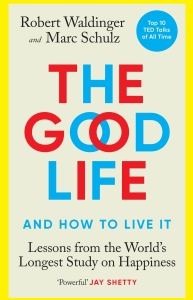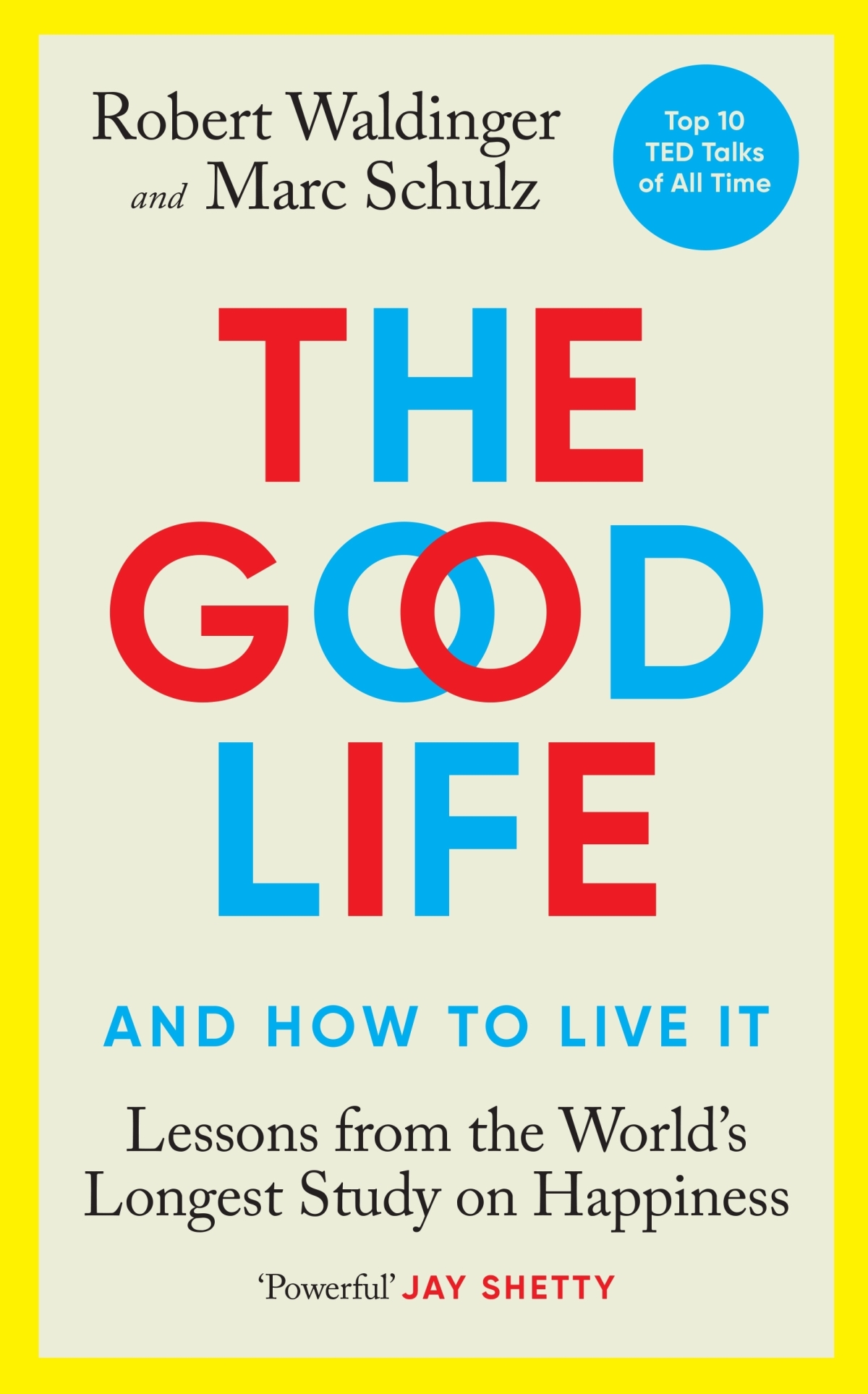
What is the key to a good life? Directors of the Harvard Study of Adult Development, Robert Waldinger and Marc Schulz, bring together over 80 years of research to reveal the true components of a happy, fulfilled life. In their ground-breaking book, The Good Life.
“Consider the feeling you get when you love someone, or when you know you are loved in return. Think about how you experience it in your body, the sensation of warmth and comfort. Now consider the similar but distinct feeling of connection when a close friend helps you through a hard time. Or the lasting exhilaration when someone you respect says they are proud of you. Think about what it feels like to be moved to tears. Or when you get a small boost of energy sharing a laugh with a co-worker. Consider the physical pain of losing someone dear to you. Or even the momentary pleasure of waving at the mail carrier.
These feelings, big and small, are connected to biological processes. Just as our brain responds to the presence of food in our bellies by rewarding us with pleasure sensations, so does it respond to positive contact with others. The brain effectively says to us: Yes, more of this, please. Positive interaction tells our bodies that we are safe, reducing our physical arousal and increasing our sense of well-being. By contrast, negative experiences and interactions create a sense that we are in danger and stimulate us to produce stress hormones like adrenaline and cortisol. These hormones are part of a cascade of physical reactions that raise alertness and help us respond to situations of critical importance—the “fight or flight” response. They are a big part of what gives us that feeling of stress.
We rely on the signals of these stress hormones and pleasurable sensations, as they guide us through the challenges and opportunities of life. Avoid danger, seek connection.
“Just as our brain responds to the presence of food in our bellies by rewarding us with pleasure sensations, so does it respond to positive contact with others.”
These reactions to rewarding and threatening situations have a long evolutionary history. Homo sapiens have been walking around the planet for hundreds of thousands of years with these biological guides to living built inside of us. That little ping of joy you get when a baby laughs at your silly expression is biologically linked to the one your distant ancestors got when they made a baby laugh in the year 100,000 BC.
Prehistoric humans were threatened in ways we can hardly conceive of today. They had similar bodies, but primitive technology gave them only minimal protection from the environment and predatory animals, and virtually no remedies for injury or other health problems. A toothache could end in death. They lived short, hard, and probably terrifying lives. And yet they survived. Why?
One important reason is a trait that early Homo sapiens shared with many other successful animal species: their bodies and brains had evolved to encourage cooperation.
They survived because they were social.
The human animal is not much different today, though the project of survival has taken on new meanings and complications. Compared to centuries past, life in the twenty-first century is changing faster than ever before, and many of the threats to our lives are of our own making. Along with challenges related to climate change, growing income inequality, and the vast complications of new communications technologies, we must deal with new threats to our internal states of mind. Loneliness is more pervasive than ever before, and our ancient brains, designed to seek the safety of groups, experience those negative feelings as life-threatening, which leads to stress and sickness. With each year that passes, civilization is presented with new challenges that were unimaginable even fifty years ago. It also presents new choices, which means life paths are now more varied than ever. But regardless of the pace of change and the choices many of us now have, this fact remains: the human animal has evolved to be connected with other humans.”
Extracted from The Good Life by Marc Schulz and Robert J. Waldinger, out now.
YOU MAY ALSO ENJOY
Extract: 12 Rules for Life by Jordan B Peterson









